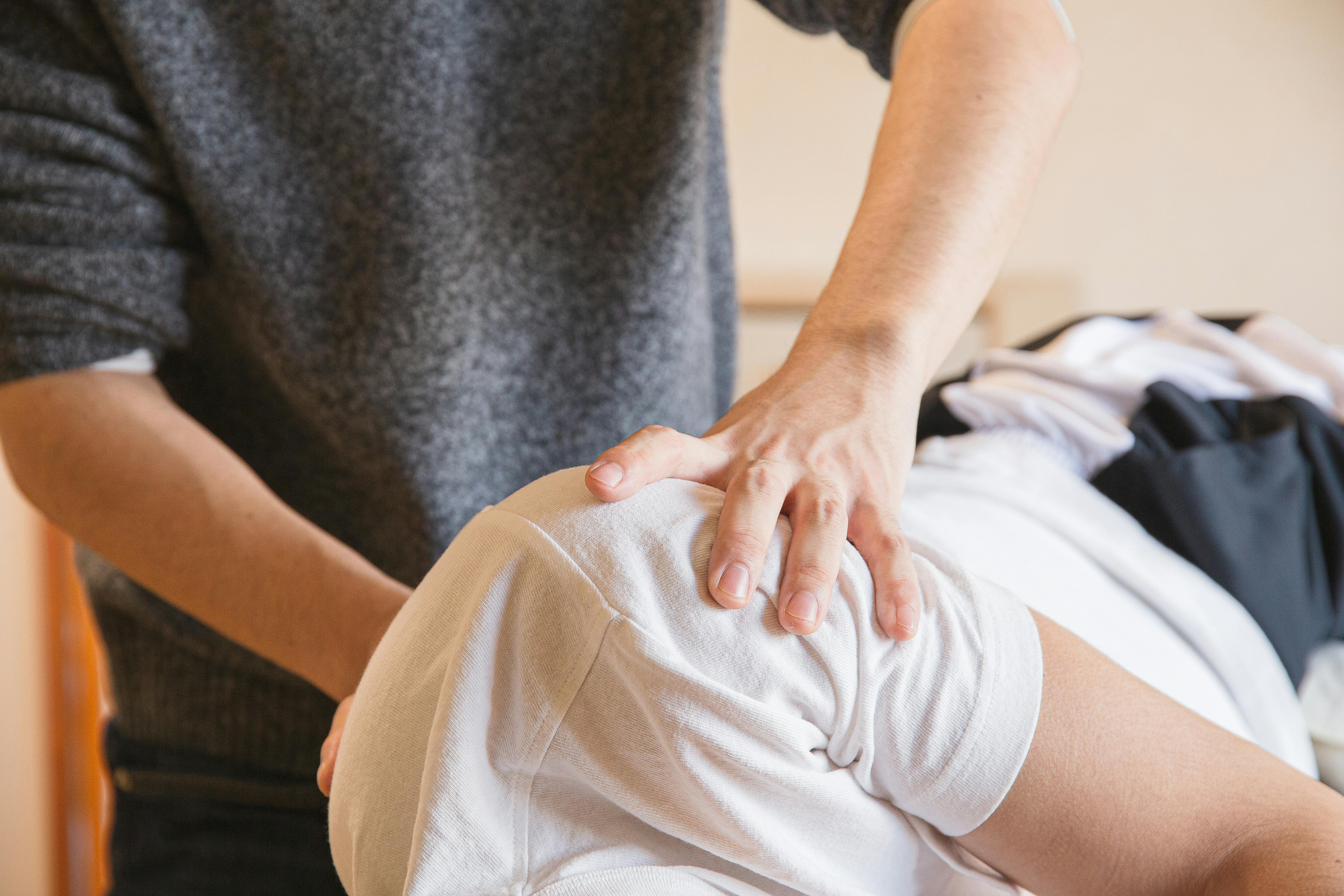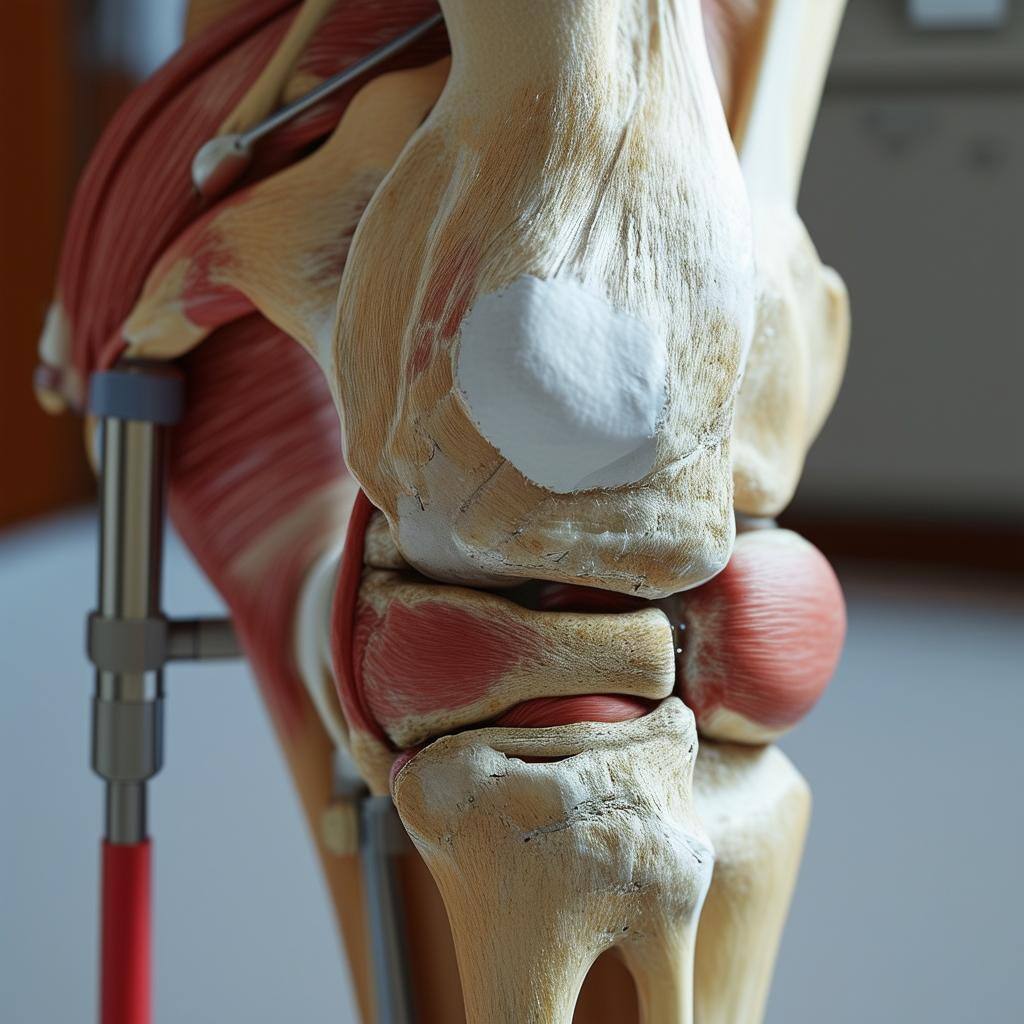.png)
Introduction
When it comes to managing knee pain, many individuals are now seeking out alternatives to knee replacement surgery. This is particularly important for those who wish to alleviate their discomfort without undergoing invasive procedures. Knee pain can significantly impact one's quality of life, hindering activities such as walking, climbing stairs, and even standing. While knee replacement surgery is a common solution, it does come with risks and a lengthy recovery period.
Why Consider Alternatives?
-
Less Invasive: Non-surgical options tend to be less invasive, reducing the risk of complications and shortening recovery time.
-
Cost-Effective: Many alternatives are more affordable compared to the high cost of surgery.
-
Personalized Treatment: Exploring different therapies allows for a customized approach tailored to individual needs.
7 Alternatives to Knee Replacement Surgery
-
Low-Impact Exercises
-
Weight Loss and Its Effect on Knee Pain
-
The Benefits of Physical Therapy for Knee Pain Management
-
Supporting Your Knees with the Right Brace
-
Exploring the Potential of Joint Supplements like Glucosamine and Chondroitin
-
Injection Therapies: Steroids, Hyaluronic Acid, and Beyond
-
Emerging Options: Orthobiologic Injections and Regenerative Medicine
Each of these alternatives offers distinct benefits aimed at reducing pain, improving mobility, and enhancing overall joint health.
For those considering surgical intervention for other joint-related issues, such as shoulder pain, it's worth exploring resources like TopDoc which provide detailed information on procedures like total shoulder replacement. Additionally, platforms like TopDoc can assist in booking appointments with top doctors near you, ensuring priority access to healthcare resources and expert care coordination.
1. Low-Impact Exercises
Exploring low-impact exercises can be a highly effective way to alleviate knee pain without putting excessive stress on your joints. These exercises help maintain joint mobility and build muscle strength around the knee, which can reduce pain and improve function.
How Low-Impact Exercises Can Help Alleviate Knee Pain
Low-impact activities minimize the force exerted on the knees, making them suitable for individuals with arthritis or other knee issues. They help:
-
Enhance flexibility
-
Strengthen muscles around the joint
-
Improve overall joint stability
Examples of Low-Impact Exercises
Consider incorporating these low-impact exercises into your routine:
-
Swimming: Provides a full-body workout without stressing the knees.
-
Cycling: Helps strengthen leg muscles while being gentle on the knees.
-
Tai Chi: Improves balance and flexibility through slow, controlled movements.
Guidelines for Safely Performing Low-Impact Exercises
When engaging in low-impact exercises, keep these guidelines in mind:
-
Warm-Up: Always start with a gentle warm-up to prepare your muscles and joints.
-
Proper Technique: Ensure correct form to avoid unnecessary strain.
-
Listen to Your Body: Stop if you experience sharp or severe pain.
Incorporating Strength Training and Stretching into Your Routine
Adding strength training and stretching can further benefit your knees:
-
Strength Training: Focus on exercises that target the quadriceps, hamstrings, and calf muscles.
-
Stretching: Include stretches that enhance flexibility in the knee joint and surrounding muscles.
Overexertion can worsen knee pain. Be mindful of:
-
Avoiding high-impact activities like running or jumping
-
Gradually increasing exercise intensity
-
Taking rest days to allow recovery
In summary, incorporating low-impact exercises into your routine can significantly reduce knee pain while enhancing mobility and strength. However, if knee pain persists and becomes severe, it is essential to consult an orthopedic doctor for a comprehensive evaluation and appropriate treatment options.
2. Weight Loss and Its Effect on Knee Pain
Understanding the Link Between Excess Weight and Knee Joint Strain
Carrying extra weight can put significant strain on the knee joints, exacerbating pain and discomfort. For every pound of excess weight, there is an additional four pounds of pressure on the knees. This increased load accelerates the wear and tear of cartilage, leading to conditions like osteoarthritis.
The Role of Healthy Dieting in Reducing Inflammation
A healthy diet not only aids in weight loss but also helps reduce inflammation, which is crucial for managing knee pain. Anti-inflammatory foods such as:
-
Leafy greens
-
Fatty fish
-
Nuts
-
Berries
can alleviate symptoms by controlling inflammatory markers in the body.
Practical Tips for Losing Weight to Ease Knee Discomfort
Effective weight loss strategies don't require drastic measures. Here are some practical tips:
-
Balanced Diet: Focus on whole foods, including fruits, vegetables, lean proteins, and whole grains.
-
Portion Control: Pay attention to serving sizes to avoid overeating.
-
Regular Exercise: Incorporate low-impact activities like walking or swimming.
-
Stay Hydrated: Drinking plenty of water can help control appetite and improve metabolism.
By adopting these habits, you can reduce knee joint strain and enhance mobility. If non-surgical alternatives related to joint health interest you, you may explore options such as hip replacement surgery for a more comprehensive understanding.
3. The Benefits of Physical Therapy for Knee Pain Management
Physical therapy is a highly effective approach for managing knee pain and avoiding surgery. It uses various techniques to target and reduce discomfort, improving joint function.
Different Physical Therapy Approaches
Here are some common techniques used in physical therapy for knee pain:
Manual Therapy
This hands-on technique involves the therapist using their hands to manipulate and mobilize the knee joint. It helps reduce stiffness and improve mobility.
Therapeutic Exercises
Specific exercises are designed to strengthen the muscles around the knee, enhance stability, and increase flexibility. Some examples include:
-
Quadriceps strengthening exercises
-
Hamstring stretches
-
Calf raises
Electrotherapy
Techniques such as Transcutaneous Electrical Nerve Stimulation (TENS) can help reduce pain by sending electrical impulses through the skin to stimulate nerves.
How Physical Therapy Helps
Physical therapy focuses on two main goals: improving joint stability and increasing range of motion. Here's how it works:
-
Strengthening Muscles: By targeting and strengthening the muscles around the knee, physical therapy helps reduce the load on the joint itself, leading to less pain.
-
Increasing Flexibility: Improved flexibility ensures that movements are smoother and less likely to cause injury or strain on the knee joint.
Incorporating regular sessions with a trained physical therapist can significantly enhance your quality of life by providing pain relief without invasive measures. However, it's important to note that not all providers adhere to community standards, so choosing a reputable one is crucial.".
4. Supporting Your Knees with the Right Brace
Using a knee brace can be a highly effective alternative treatment for knee issues, providing both support and pain relief. There are different types of knee braces designed to address various conditions:
-
Prophylactic Braces: These are used primarily to prevent knee injuries, especially in athletes engaged in high-impact sports. They provide stability and protection during physical activities.
-
Functional Braces: Typically recommended for individuals who have already suffered a knee injury, functional braces help manage existing conditions by offering support that enhances stability and function.
-
Unloader Braces: These are specifically designed for people with arthritis. By redistributing the weight away from the damaged part of the knee, unloader braces help reduce pain and improve mobility.
How Knee Braces Help with Pain Relief and Joint Alignment
Knee braces work through several mechanisms:
-
Pain Relief: By providing external support, knee braces can alleviate pressure on the joint, reducing pain during movement.
-
Joint Alignment: Some braces help keep the knee properly aligned, which can prevent further damage and promote healing.
-
Enhanced Stability: Braces can stabilize the knee by limiting its range of motion, preventing movements that might exacerbate an injury.
Incorporating a suitable brace into your treatment plan can significantly improve your quality of life by reducing pain and enhancing mobility.
For certain cases where alternative treatments don't suffice, knee replacement surgery may be considered as a transformative treatment option for individuals dealing with severe knee arthritis or injury. However, it's vital to consult healthcare professionals to explore all available options tailored to your specific needs.
Understanding and choosing the right type of brace is crucial. Always consult a medical professional to ensure you select one that best suits your condition and activity level.
5. Exploring the Potential of Joint Supplements like Glucosamine and Chondroitin
Joint supplements, specifically glucosamine and chondroitin, have gained attention for their potential to reduce knee pain and promote joint health. Many people who want to address their symptoms without undergoing surgery often consider these supplements.
How Oral Supplements Work to Nourish the Joint Cartilage
-
Glucosamine: A natural compound found in healthy cartilage, especially in the fluid around the joints. It plays a crucial role in building and maintaining cartilage, which is essential for joint function.
-
Chondroitin: Another vital component of cartilage, helping it retain water and maintain elasticity. This can aid in shock absorption within the knee joint.
Mechanism of Action
-
Cartilage Support: Both glucosamine and chondroitin work together to nourish and protect the joint cartilage. By doing so, they can help slow down the deterioration process associated with osteoarthritis.
-
Inflammation Reduction: These supplements may also decrease inflammation around the knees, resulting in less pain and better mobility.
-
Lubrication: Improving the lubrication inside the knee joint, which can lead to smoother movement and less friction between bones.
Dosage and Considerations
-
Recommended Dosage: Typically, glucosamine is taken in doses of 1,500 mg per day, while chondroitin is taken at 800-1,200 mg per day. However, it's essential to consult with a healthcare provider before starting any new supplement regimen.
-
Possible Side Effects: Though generally considered safe, some individuals may experience mild side effects such as stomach upset or headaches.
Incorporating glucosamine and chondroitin into your daily routine could be a viable strategy for managing knee pain and supporting overall joint health.
6. Injection Therapies: Steroids, Hyaluronic Acid, and Beyond
Injections for knee pain can be a good option instead of surgery, providing relief through various methods.
Steroid Injections
-
Role: Mainly used to reduce inflammation within the knee joint.
-
Mechanism: These injections contain corticosteroids that help to decrease inflammation and alleviate pain.
-
Effectiveness: Often provide quick relief but may need regular administration.
Hyaluronic Acid Injections
-
Role: Aim to restore lubrication in the knee joint.
-
Mechanism: Hyaluronic acid is a natural component of joint fluid; injections help replenish this, improving joint function and reducing pain.
-
Effectiveness: Particularly beneficial for those with osteoarthritis where the natural hyaluronic acid has degraded.
Other Injections
New treatments include:
-
Platelet-Rich Plasma (PRP): Uses concentrated platelets from your own blood to promote healing.
-
Stem Cell Therapy: Uses stem cells to regenerate damaged tissues in the knee.
Both PRP and stem cell therapies are part of regenerative medicine, focusing on harnessing the body's healing capabilities.
Intra-articular injections offer a minimally invasive way to address knee pain, targeting specific issues like inflammation and lubrication loss.
7. Emerging Options: Orthobiologic Injections and Regenerative Medicine
Orthobiologic injections and regenerative medicine are showing promise in knee repair by leveraging the body's natural healing processes. These treatments aim to regenerate damaged tissues and reduce inflammation, potentially offering a less invasive alternative to knee replacement surgery.
Platelet-Rich Plasma (PRP) Therapy
-
PRP involves drawing a small amount of the patient's blood, processing it to concentrate the platelets, and re-injecting it into the knee.
-
Platelets contain growth factors that can stimulate tissue repair and reduce inflammation.
-
PRP has been found effective in easing pain and improving function in patients with osteoarthritis.
Bone Marrow Aspirate Concentrate (BMAC)
-
BMAC is derived from the patient's own bone marrow, typically extracted from the hip bone.
-
The concentrate contains stem cells, which have the ability to differentiate into various cell types, aiding in tissue regeneration.
-
Injecting BMAC into the knee can help repair cartilage damage and improve joint health.
Placental Tissue Matrix Therapy (PTMT)
-
PTMT uses placental tissues collected during childbirth (with donor consent), which are rich in growth factors and extracellular matrix components.
-
These biological materials can promote healing and reduce inflammation when injected into the knee joint.
-
PTMT is being explored for its potential to support tissue regeneration and enhance recovery.
These emerging options in regenerative medicine offer new hope for those seeking non-surgical treatments for knee pain. By harnessing the body's natural healing mechanisms, orthobiologic injections like PRP, BMAC, and PTMT present viable alternatives to traditional knee replacement surgery.
Other Promising Advancements in Non-Surgical Knee Treatments
Exploring minimally invasive procedures for knee pain reveals some promising advancements that are worth considering. Two notable options are nSTRIDE Autologous Protein Solution (APS) and Lipogems®.
nSTRIDE Autologous Protein Solution (APS)
-
What it is: A concentrated protein solution derived from a patient's own blood.
-
Mechanism: It contains anti-inflammatory proteins that help reduce inflammation and promote healing in the knee joint.
-
Benefits:
-
Reduces pain and improves function.
-
Minimally invasive with a quick recovery time.
Lipogems®
-
What it is: A therapy that uses adipose (fat) tissue from the patient's body.
-
Mechanism: The extracted fat is processed to create a tissue graft that supports the healing of damaged tissues in the knee.
-
Benefits:
-
Provides cushioning and support to the joint.
-
Stimulates natural healing processes.
-
Minimally invasive, requiring only small incisions.
These treatments offer new avenues for reducing knee pain without the need for surgery. Their effectiveness lies in their ability to harness the body's own healing mechanisms, making them viable options for those looking to avoid knee replacement surgery.
The Importance of a Comprehensive Approach to Knee Pain Management
Addressing knee pain effectively often requires a holistic approach that considers multiple facets of health and well-being. Personalized treatment plans are essential for achieving long-term relief and maintaining joint function.
Seeking Expert Medical Advice for Long-Term Treatment Strategy
Consulting with healthcare professionals can help tailor a comprehensive plan specific to individual needs. Expert guidance ensures:
-
Accurate diagnosis of the underlying cause of knee pain
-
Customized recommendations for non-surgical interventions
-
Monitoring progress and adjusting treatments as necessary
Combining Multiple Modalities for Optimal Results
Incorporating various treatment methods enhances the likelihood of success in managing knee pain. A multifaceted approach may include:
-
Low-impact exercises: To maintain mobility and strengthen muscles around the knee.
-
Physical therapy: For targeted rehabilitation and improving joint stability.
-
Weight management: Reducing stress on knee joints through a balanced diet.
-
Knee braces: Providing support and alleviating discomfort during activities.
-
Joint supplements: Nourishing cartilage for improved joint health.
-
Injection therapies: Offering temporary relief from inflammation and pain.
An integrated strategy leverages the strengths of each modality, optimizing outcomes and potentially delaying or avoiding the need for surgery.
Conclusion
Knee pain can have a big impact on your daily life, so it's important to look for options other than surgery. There are several non-surgical choices that can effectively help with knee pain:
-
Low-impact exercises like swimming and cycling provide relief without putting additional strain on the joints.
-
Weight loss helps reduce pressure on your knees, easing pain.
-
Physical therapy offers tailored approaches to improve joint stability and range of motion.
-
Knee braces support and align the joint, providing significant pain relief.
-
Joint supplements such as glucosamine and chondroitin nourish cartilage and promote joint health.
-
Injection therapies, including steroids and hyaluronic acid, reduce inflammation and restore lubrication.
-
Orthobiologic injections like PRP and stem cell therapy harness the body's healing potential for tissue regeneration.
Exploring these alternatives can lead to substantial improvements in knee function and pain management. Consulting with an orthopedist ensures a personalized treatment plan that addresses individual needs. Surgery or knee replacement should be considered only if these non-surgical options do not provide sufficient relief. This comprehensive approach can lead to better outcomes and improved quality of life without the need for invasive procedures.
FAQs (Frequently Asked Questions)
What are some low-impact exercises that can help alleviate knee pain?
Low-impact exercises such as swimming, cycling, and Tai Chi can help alleviate knee pain. It is important to incorporate strength training and stretching into your exercise routine, while also being cautious of overexertion.
How does weight loss affect knee pain?
Excess weight can strain the knee joint, leading to increased knee pain. Healthy dieting and practical tips for losing weight can help reduce inflammation and ease knee discomfort.
What are the benefits of physical therapy for knee pain management?
Physical therapy offers different approaches such as manual therapy, therapeutic exercises, and electrotherapy to improve joint stability and range of motion, aiding in knee pain rehabilitation.
How do knee braces support the knees?
There are different types of knee braces, including prophylactic, functional, and unloader braces, which work to provide pain relief and align the knee joint for better support.
How do joint supplements like glucosamine and chondroitin work to nourish the joint cartilage?
Oral supplements like glucosamine and chondroitin work to nourish the joint cartilage, potentially reducing inflammation and supporting overall joint health.
What is the role of injection therapies such as steroids and hyaluronic acid in reducing inflammation and restoring lubrication in the knee?
Intra-articular injections such as steroids and hyaluronic acid play a role in reducing inflammation and restoring lubrication within the knee joint, providing relief from knee pain.
What are some emerging options for non-surgical knee treatments?
Emerging options include orthobiologic injections like Platelet-Rich Plasma (PRP), Bone Marrow Aspirate Concentrate (BMAC), and Pure Tissue Matrix Technology (PTMT), which harness the healing potential of biologic agents for tissue regeneration.
What are some minimally invasive procedures for knee pain?
nSTRIDE APS and Lipogems® are novel approaches that stimulate healing processes without the need for surgery. These minimally invasive procedures offer promising advancements in non-surgical knee treatments.
Why is it important to explore alternative therapies before resorting to surgery or knee replacement surgery?
It is important to explore alternative therapies before resorting to surgery or knee replacement surgery if absolutely necessary because personalized treatment plans and a comprehensive approach to knee pain management can lead to optimal results. Seeking expert medical advice for a long-term treatment strategy is crucial in achieving holistic care for knee issues.



Comments (0)